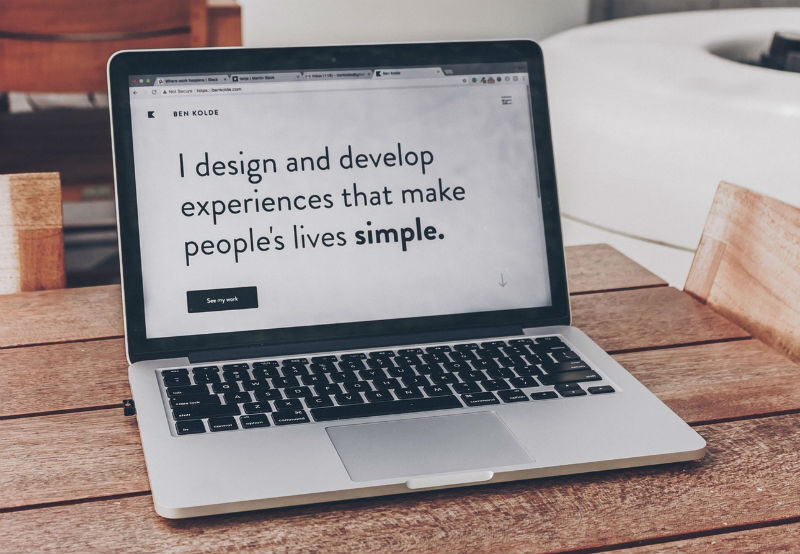Some of my inquiries look a little something like this:
“Hi! I need a website and would love to work with you! I love your site and your style on Instagram. Please let me know how much you charge! Thanks!”
I assume, that this person has viewed all the pages on my site, including the services page, so I send them my price guide, emphasize that things are customizable to their needs, and tell them I’ll talk with them soon, then wait.
And wait
And wait.
And wait.
Sometimes I get one of two responses:
1) “Hey, thanks for following up. Your prices are too high for my budget.” Fair enough. That’s honest.
2) “I can find someone cheaper.” OK…
Then, of course, there are also the responses who are for it and roll with it. Love ya’ll. Much appreciated.
But let’s focus on the two responses.
When potential clients turned into noes, I used to get bummed out. I thought begging and lowering my prices to serve them would benefit me because hey, I get to build up my portfolio. “And,” I thought, “They can recommend me and then I’ll pitch them my higher prices.”
What a way to cheapen myself-might as well be working for exposure.
Here’s what I’ve started to understand over the last few years.
1) Potential clients know the end result, a website. They don’t know the process or the work that goes into it. How can they? That’s why they reached out to you.
2) Other than labor, there are other factors that need to be considered. We’ll get to that in a minute.
3) Some people are just cheap. They want fast, pretty, and functional for a $1.99 and a biscuit from Popeyes (mmm…Popeyes).
For some reason, they are ENTITLED to undercutting your value while getting work from you. Thank your lucky stars these clients aren’t for you.
So this is how to price a project, according to me.
My skill level.
I’ve worked as a designer for seven years for a variety of industries on many levels. In a corporate world that makes me senior-level. Now, I don’t go through this specifically, but I want to compare it to something familiar to illustrate a point.
I’m not in the business of working with people just to gain experience. I want to build relationships with their brand because the knowledge and skill I have can foster their growth and help them generate revenue and go beyond their goals. Studying, trying, failing, fixing, and succeeding means I can help uncover problems you didn’t know you had and provide solutions.
What does this have to do with design?
Great question: design isn’t about making something look good, it’s about providing solutions to your users.
I take that into consideration when I outline, design, and build.
Every. Single. Time.
Will your website look pretty? Yes.
It will also be responsive to multiple screen sizes, be designed for mobile so your rankings aren’t punished by Google, AND make sure your site loads fast enough so your visitors don’t bounce off your site.
Yes, this kind of critical thinking applies to design.
Taxes.
Grab your paystub. You’ll see things taken out before your final amount.
These “things” are called taxes.
Your gross wages are 2500
But then there’s:
Medicare
Social Security
Federal Tax
State Tax (varies by state)
Your net pay at the end of that is 1600.
When setting prices, we have to include taxes. Depending on the service, it’s built into the pricing, sometimes you’ll see it on your invoice.
Freelancing/ self-employment does not mean we are free from taxes. Quarterly, we have to look at our accounting and see how much we owe to the federal and sometimes state government. And the percentage varies, but 15% tends to the average a for-profit business is charged per quarter.
Yay.
Oh, have I forgot to mention insurance? Because if you live in the greatest country in the world who’s healthcare system works off of capitalism, we pay for that too (or have a rainy day fund and use essential oils praying we don’t injure ourselves).
Basic Expenses.
We, too, have bills. Car, rent/mortgage, loans, utilities, food, medical bills and insurance are the same as anyone else who’s working full time. Don’t let the perception of some “influencers” traveling all around the world make you think we’re all rolling in the big bucks. It’s all a faulty and dangerous image that I want to go away forever.
Those fancy programs? They don’t come for free (man I wish they did). Gotta pay for that too.
It’s not about being a starving artist (if this is how you see yourself, please oh please adjust your prices. You don’t deserve to starve).
I am not, by any means charging you extra so I can jet set to the Caribbean. That’s not a way I practice business and know I have to budget on my own account if I want to do that.
What I (and most of us) are trying to do is make a living. The same way you, the service seeker, want things to happen for you, the same goes for us. It’s all about investing and making an ROI to be successful.
The scope of the project.
Is this going to hit my usual 6-8 week window? Is this a rush job? Will I need to contact someone else to help with a part of the project? Will there be extra tools, like paid stock images, I need to bill the client for?
Rush jobs get an extra $250 fee. If the web design project asks for huge web development, I will have to hire a web developer (a note: web developers and web designers are NOT the same things). If there’s heavier paper needed, we’ll have to place a special order because most stores don’t carry special grade paper for invitations, etc.
To profit.
In order to have a successful business, there needs to be a profit. There are no shortcuts to this. Management and good accounting are the two major ways to get there. No one wants to broke: not you, the CEO of a company, the person working a “traditional” 9-5, or the person who’s self-employed.
Do not be afraid of wanting to profit, and don’t look down on those who do, especially if done so ethically.






